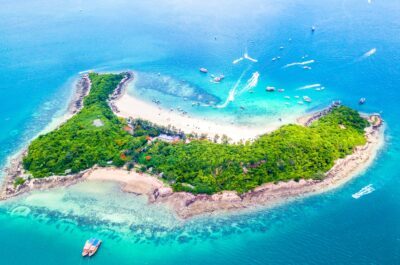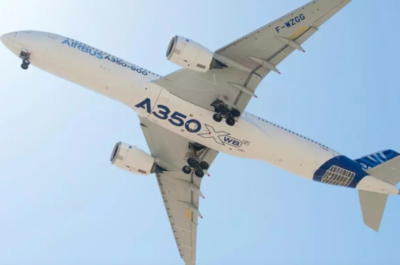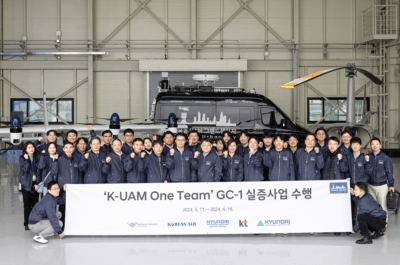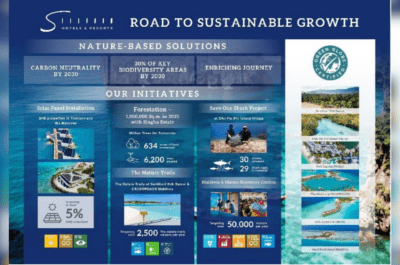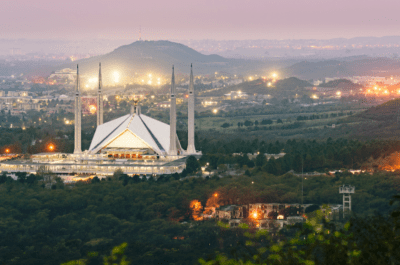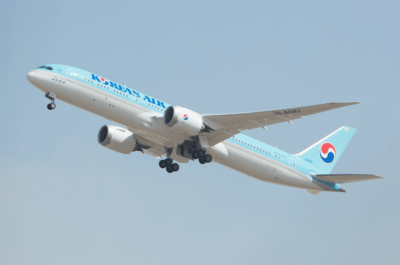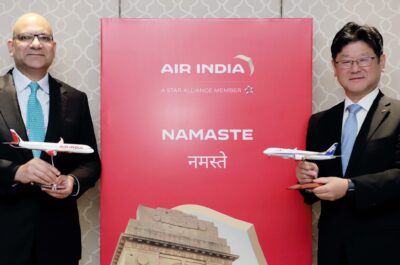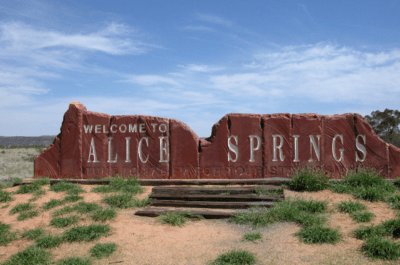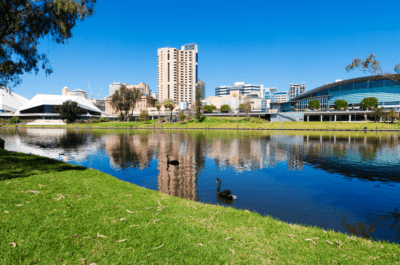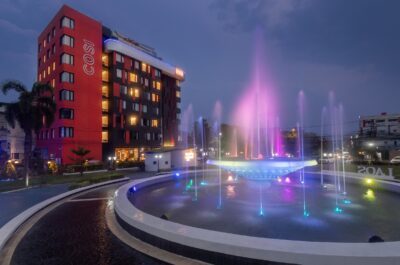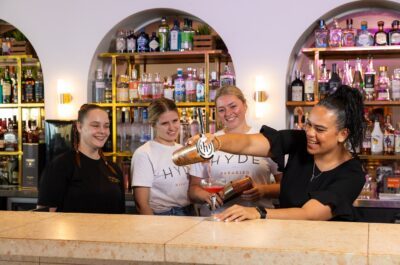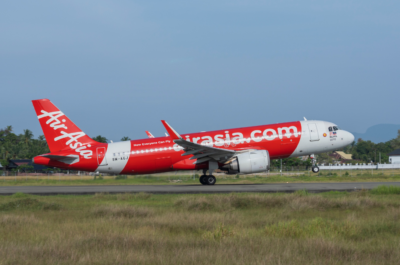Rail tourism emerges as a sustainable travel solution, blending environmental responsibility with the allure of immersive experiences. Destinations worldwide are tapping into rail’s potential, offering eco-friendly journeys through breathtaking landscapes.
This article is part of the Balanced Tourism column.
The tourism industry stands at a crossroads. As the impacts of climate change become impossible to ignore, travelers are increasingly demanding sustainable options.

In recent years, rail tourism has emerged as a potent catalyst for promoting balanced and sustainable tourism, resonating with travelers’ growing desire for environmentally friendly and immersive travel experiences. By offering a unique blend of comfort, convenience, and connectivity, rail travel presents a compelling alternative to air and road transport, significantly reducing carbon footprints and fostering local economies. This article explores global destinations and travel companies that have successfully harnessed the potential of rail tourism, alongside innovative campaigns that have elevated its appeal. Lonely Planet, the Guardian, Culture Trip, CNN Traveler, and others have curated some of the most amazing train journeys in the world.
The Environmental Case for Rail

Railways offer a compelling sustainable alternative to air and car travel. Train journeys generate significantly lower levels of carbon emissions per passenger-mile. By shifting from planes to trains, and highways to tracks, the tourism sector can substantially reduce its environmental footprint.
Rail Tourism: Beyond Just Transportation
Rail tourism transcends mere transportation. It encourages a slower, more mindful approach to travel. Passengers have the unique opportunity to immerse themselves in the ever-changing scenery as they glide through diverse landscapes. Train travel fosters a greater appreciation and connection to the places visited.
The Economic Benefits:
Sustainable tourism doesn’t have to mean economic compromise. Rail tourism generates a host of economic benefits:
- Expanding Regional Economies:
Rail networks reach smaller towns and rural areas, boosting economies often bypassed by traditional tourism.
- Supporting Local Businesses:
Train travelers are more likely to explore and spend in the community, supporting local restaurants, shops, and services.
- Preserving Cultural Heritage:
Scenic railways and heritage train lines contribute to the preservation of cultural and historical resources.
Promotion of balanced and sustainable tourism:
- Invest in Rail Infrastructure:
Expand networks, increase train frequency, and improve station facilities.
- Collaboration is Key:
Rail operators, travel agencies, and tourism boards must collaborate to create compelling rail tourism packages.
- Strategic Marketing:
Highlight the convenience, comfort, and sustainable aspects of rail travel. Target campaigns to eco-conscious travelers.
Benefits of Rail Tourism

1. Environmental Sustainability: Rail travel is often highlighted as one of the most sustainable modes of transportation. Trains emit significantly lower levels of greenhouse gases per passenger kilometer compared to airplanes and cars, contributing to reduced environmental impact and supporting the global effort to combat climate change.
2. Economic Development: Rail tourism can stimulate economic growth by providing direct and indirect employment opportunities in both urban and rural areas. It encourages the development of infrastructure, hospitality, and services around railway stations and along the routes, benefiting local communities and economies.
3. Enhanced Accessibility: Trains can connect remote and rural areas with major cities, improving accessibility and distributing tourist flow more evenly across destinations. This can alleviate the pressure on over-touristed locations and promote the discovery of lesser-known regions, contributing to a more balanced distribution of tourism benefits.
4. Cultural Exchange and Heritage Preservation: Many rail journeys are designed to showcase a country’s cultural heritage, offering travelers an immersive experience into the history, cuisine, and traditions of the regions through which they travel. This not only enriches the travel experience but also plays a role in preserving and promoting local cultures and traditions.
5. Safety and Comfort: Generally, rail travel is considered safer than road travel. Modern trains offer various classes of service to cater to different budgets, with amenities such as spacious seating, dining services, and sleeping accommodations, making long-distance travel more comfortable and enjoyable.
Challenges and Drawbacks of Rail Tourism

1. Infrastructure and Investment: Developing and maintaining rail infrastructure requires significant investment, which can be a major challenge, especially for developing countries or regions with limited financial resources. Upgrading tracks, stations, and trains to meet modern standards and ensure environmental sustainability can be costly and time-consuming.
2. Competition from Low-cost Airlines: With the rise of low-cost airlines offering competitive prices and faster travel times for long distances, rail tourism faces stiff competition. This is particularly challenging for high-speed and luxury rail services that may struggle to attract price-sensitive travelers.
3. Environmental Impact of Infrastructure Development: While rail travel itself is relatively sustainable, constructing new rail lines and maintaining existing ones can have significant environmental impacts, including habitat disruption, noise pollution, and landscape changes. Balancing infrastructure development with environmental conservation is a critical challenge.
4. Operational Challenges: Rail systems can be affected by operational challenges such as delays, strikes, and maintenance issues, which can deter travelers seeking reliability and convenience. Furthermore, integrating different rail systems and services across countries or regions to ensure smooth travel experiences can be complex.
5. Limited Flexibility and Reach: Trains are bound to specific routes and schedules, which may limit flexibility compared to car travel. In areas where rail networks are not extensively developed, reaching remote destinations can be difficult, potentially excluding some attractions from the benefits of rail tourism.
Destinations Embracing Rail Tourism
Europe boasts a vast rail network and scenic routes. European Travel Commission and Eurail created the Rail Tourism Awards which celebrate impactful campaigns that champion sustainable rail travel within Europe. The “All Aboard for Change” campaign by Rail Europe highlighted the environmental benefits of train travel over other modes of transport. It featured a series of short films showcasing stunning European rail journeys and underscored the message of making conscious travel choices.
Switzerland‘s Glacier Express and Bernina Express offer unrivaled views of the Alps. The “Grand Train Tour of Switzerland” campaign consolidates routes and information, offering seamless planning for tourists.
The UK Great Rail Journeys “Go Slow” campaign targets a mature demographic interested in comfortable, leisurely travel. It emphasizes the scenic landscapes, cultural experiences, and the relaxed pace of rail journeys. The UK’s Settle-Carlisle Railway traverses the rugged Yorkshire Dales. The “Trafalgar Tours by Rail” itineraries by the The Travel Cooperation offer European itineraries with a strong emphasis on train travel.
Norway’s rail network offers an incredible experience. The Bergen Railway takes travelers across breathtaking fjords and mountains. The Flåm Railway is one of the world’s steepest, showcasing the engineering feat of railway construction in the region.
Outback rail journeys offer truly unique experiences. The Ghan travels from Adelaide to Darwin, traversing the red desert heart of the continent. The Indian Pacific crosses the country from Sydney to Perth, offering a vast transcontinental experience.
South Africa:
Rovos Rail operates luxury journeys across Southern Africa, combining spectacular scenery, historical routes, and top-notch service. Their popular Pretoria to Cape Town journey is a classic.
China:
China’s High-Speed Rail Revolution:
Pioneering Rail TourismChina’s ambitious expansion of its high-speed rail (HSR) network is a remarkable feat of engineering and planning that has positioned the country as a global leader in rail innovation. This extensive network has not only transformed the way Chinese people travel but has also had a profound impact on tourism, opening up remote areas and making them accessible to both domestic and international tourists. Among these, the picturesque towns of Yunnan province serve as a prime example of how HSR can revolutionize travel and boost local economies.
Bridging Distances, Connecting Cultures
The development of China’s high-speed rail began in earnest in the early 2000s, with the government investing heavily in technology, infrastructure, and expertise. The goal was clear: to create the world’s largest and most advanced high-speed rail network. This vision was not just about enhancing connectivity between major cities; it was also about reaching smaller, remote areas that had previously been difficult to access.Yunnan, with its stunning landscapes, diverse cultures, and unique biodiversity, was one such region that stood to benefit greatly from high-speed rail connectivity. The province is known for its rugged terrain, which made traditional rail and road travel time-consuming and often inconvenient. The introduction of high-speed rail has dramatically changed this, reducing travel times significantly and providing a comfortable, reliable mode of transportation.
A Catalyst for Tourism
The impact of high-speed rail on tourism in Yunnan and other similar regions has been transformative. Cities like Kunming, Dali, and Lijiang are now easily accessible, attracting tourists who are keen to explore beyond the well-trodden paths. This ease of access has led to a surge in domestic and international tourism, boosting local economies and fostering a deeper appreciation for China’s natural and cultural heritage.Moreover, the high-speed rail experience itself has become a part of the attraction. The trains are modern, fast, and offer scenic views of the countryside, providing a unique and enjoyable way to travel. For many, the journey is as memorable as the destination.
Setting a Global Standard
China’s success with high-speed rail tourism has not gone unnoticed on the international stage. The country has set a new global standard for rail infrastructure, demonstrating the potential of high-speed rail to transform travel and tourism. Other countries are looking to China’s model as they plan and develop their own high-speed rail networks, recognizing the benefits of such investment in promoting tourism and economic development.
The Road Ahead
As China continues to expand its high-speed rail network, the future of rail tourism looks bright. The government’s commitment to sustainable, efficient transportation, along with ongoing technological advancements, suggests that China will remain at the forefront of high-speed rail innovation. For tourists, this means more opportunities to explore the vast and varied landscapes of China, from the bustling cities to the serene beauty of remote regions like Yunnan. The recent inauguration of the China-Laos high-speed rail link is a significant milestone in China’s ambitious Belt and Road Initiative (BRI) and its global high-speed rail expansion. The China-Laos route exemplifies China’s vision of creating a modern Silk Road, connecting regions and countries through advanced transportation networks. The China-Laos high-speed rail line is a part of a larger plan to create a pan-Asian railway network extending from Kunming in China’s Yunnan province to Singapore, passing through Laos, Thailand, and Malaysia.
Japan – The Shinkansen Experience:
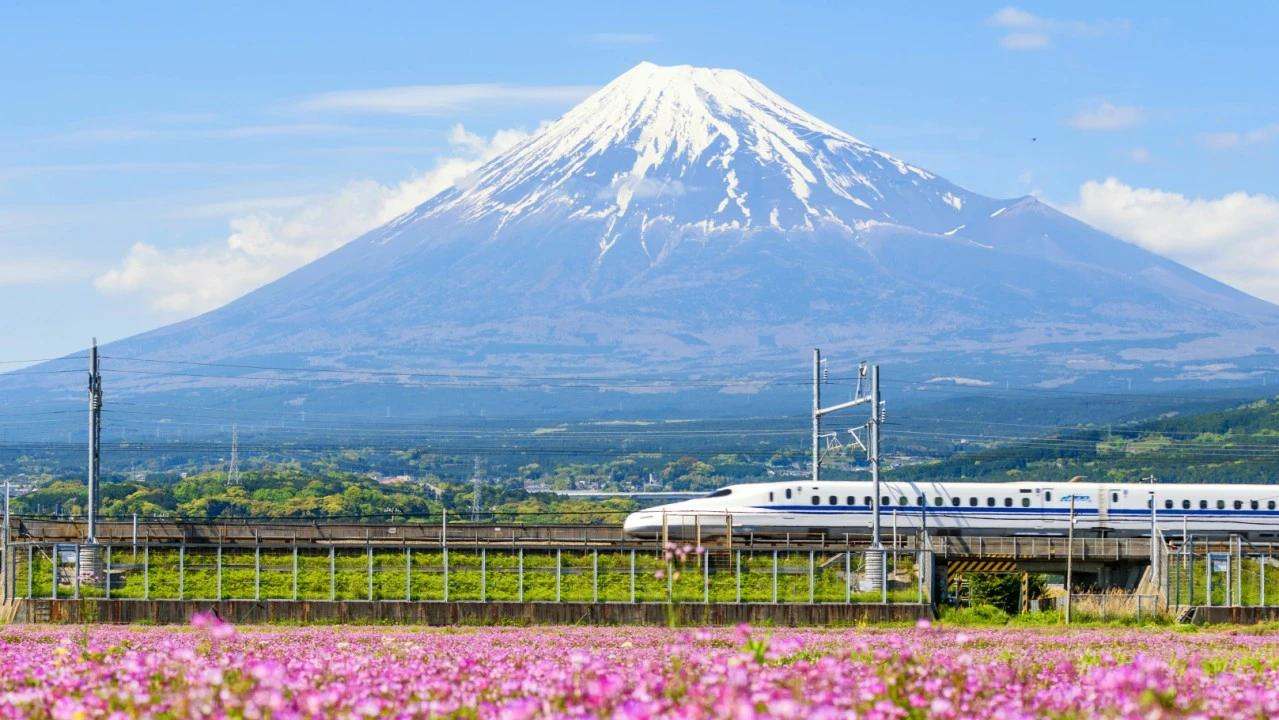
Japan offers a convenient and efficient way to explore the country. Japan’s Shinkansen, or bullet trains, epitomize the fusion of high-speed rail travel with impeccable service. By efficiently connecting cities across the islands, the Shinkansen network encourages exploration beyond the usual tourist hotspots, supporting local businesses and distributing tourist traffic more evenly.
- Impact: The Shinkansen has not only revolutionized travel within Japan but also set a global benchmark for high-speed rail. It has significantly reduced travel time between major cities, contributing to increased domestic and international tourism. The convenience and efficiency of the Shinkansen have dispersed tourist crowds more evenly across the country, reducing the strain on over-visited destinations and benefiting lesser-known regions.
- Results: Increased visitor numbers in previously under-visited areas have led to economic revitalization, with local businesses experiencing growth due to the influx of tourists. The network’s expansion continues to support Japan’s tourism and economic development goals.
Switzerland – The Scenic Route:
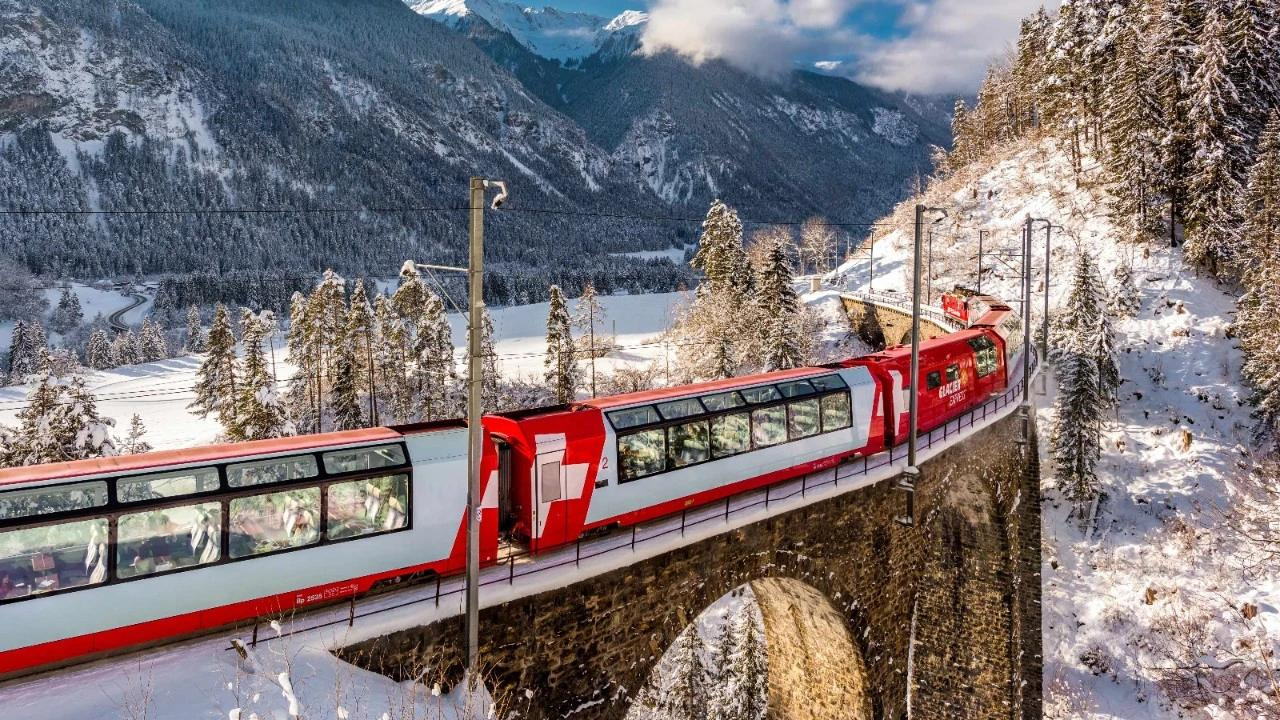
Switzerland’s rail system is renowned for offering some of the world’s most picturesque train journeys, such as the Glacier Express and the Bernina Express. These routes not only showcase the country’s stunning landscapes but also highlight Swiss commitment to precision, reliability, and sustainability in transportation.
- Impact: Switzerland’s investment in marketing its scenic rail routes has enhanced its image as a premier eco-friendly tourism destination. The trains offer unparalleled views of the Swiss landscape, making the journey itself a significant part of the travel experience, encouraging slow travel, and reducing the carbon footprint of tourism.
- Results: Routes like the Glacier Express and the Bernina Express have seen growing passenger numbers, contributing to the popularity of rail passes among tourists. This growth has led to an increase in overnight stays in connected regions, spreading economic benefits across the country.
India – The Heritage on Tracks:

India’s luxury trains, like the Palace on Wheels and the Maharajas’ Express, provide a window into the country’s rich cultural heritage while traversing through diverse landscapes. These trains have revitalized lesser-known destinations and have become an integral part of India’s tourism offerings.
- Impact: India’s luxury trains have helped in the preservation and promotion of the country’s cultural heritage, offering immersive experiences that combine royal history with modern luxury. These trains have supported rural economies by bringing tourists to regions that were previously off the conventional tourist map.
- Results: Increased international and domestic interest in luxury rail travel within India has led to higher occupancy rates on these trains and boosted local handicrafts, cuisines, and cultural performances, creating new livelihood opportunities.
Campaigns Promoting Rail Tourism
1. Eurail’s #MyEurailTrip Campaign

Eurail’s social media campaign encouraged travelers to share their European rail journey experiences online. By leveraging user-generated content, the campaign showcased the ease, flexibility, and breadth of experiences accessible through Eurail passes, appealing to a diverse audience seeking sustainable travel options.
- Impact: By leveraging social media, Eurail engaged a younger demographic, showcasing the flexibility and breadth of experiences accessible through its rail passes. The campaign successfully positioned rail travel as a convenient and sustainable way to explore Europe.
- Results: The campaign led to an increase in Eurail Pass sales, with the company noting a particular uptick among travelers from non-European countries. User-generated content created a vast online repository of real travel stories, inspiring more people to consider rail travel as a primary mode of transportation across Europe.
2. Switzerland Tourism’s “Grand Train Tour of Switzerland” Campaign
This campaign spotlighted Switzerland’s extensive rail network as a way to explore the country’s natural beauty, cultural heritage, and sustainability initiatives. It successfully positioned Switzerland as the ultimate rail tourism destination, appealing to eco-conscious travelers.
- Impact: This campaign effectively packaged Switzerland’s comprehensive rail network as a single, grand tour, simplifying the tourist experience and highlighting sustainability. It served as a powerful tool for promoting Switzerland as a destination that could be explored extensively and comfortably by train.
- Results: The campaign has boosted the sale of Swiss Travel Passes and increased international tourist arrivals, with many visitors specifically citing the rail tour as a major reason for their visit. It has also spread tourism more evenly throughout the year, reducing seasonal overcrowding.
3. Germany’s “No Need to Fly” Campaign by Deutsche Bahn
Overview: Launched by Deutsche Bahn, Germany’s national railway company, the “No Need to Fly” campaign aimed to highlight the extensive reach of its rail network and the competitive travel times to major European destinations, presenting rail travel as a viable and more sustainable alternative to flying within Europe.
Impact:
- Environmental Awareness: The campaign significantly raised awareness about the environmental benefits of choosing rail travel over air travel, aligning with growing consumer concern about climate change and carbon footprints. By emphasizing the lower CO2 emissions associated with rail travel, DB positioned itself as a green transportation leader.
- Behavioral Shift: The campaign encouraged a shift in travel behavior among Germans and European travelers, with many opting for rail travel for intra-European journeys. This shift is particularly noteworthy among a demographic that previously favored air travel for its speed and, occasionally, lower costs.
Results:
- Increased Rail Travel: Deutsche Bahn reported increases in passenger numbers on international routes marketed under the campaign. This success not only reflects a growing preference for rail travel but also supports DB’s investments in expanding and upgrading its cross-border services.
- Economic Benefits: The campaign has contributed to economic benefits both for DB and for the destinations connected by its network. Increased rail travel has led to higher spending in these locales, benefiting local businesses and tourism sectors.
4. UK’s “Go Slow” Campaign by Great Rail Journeys
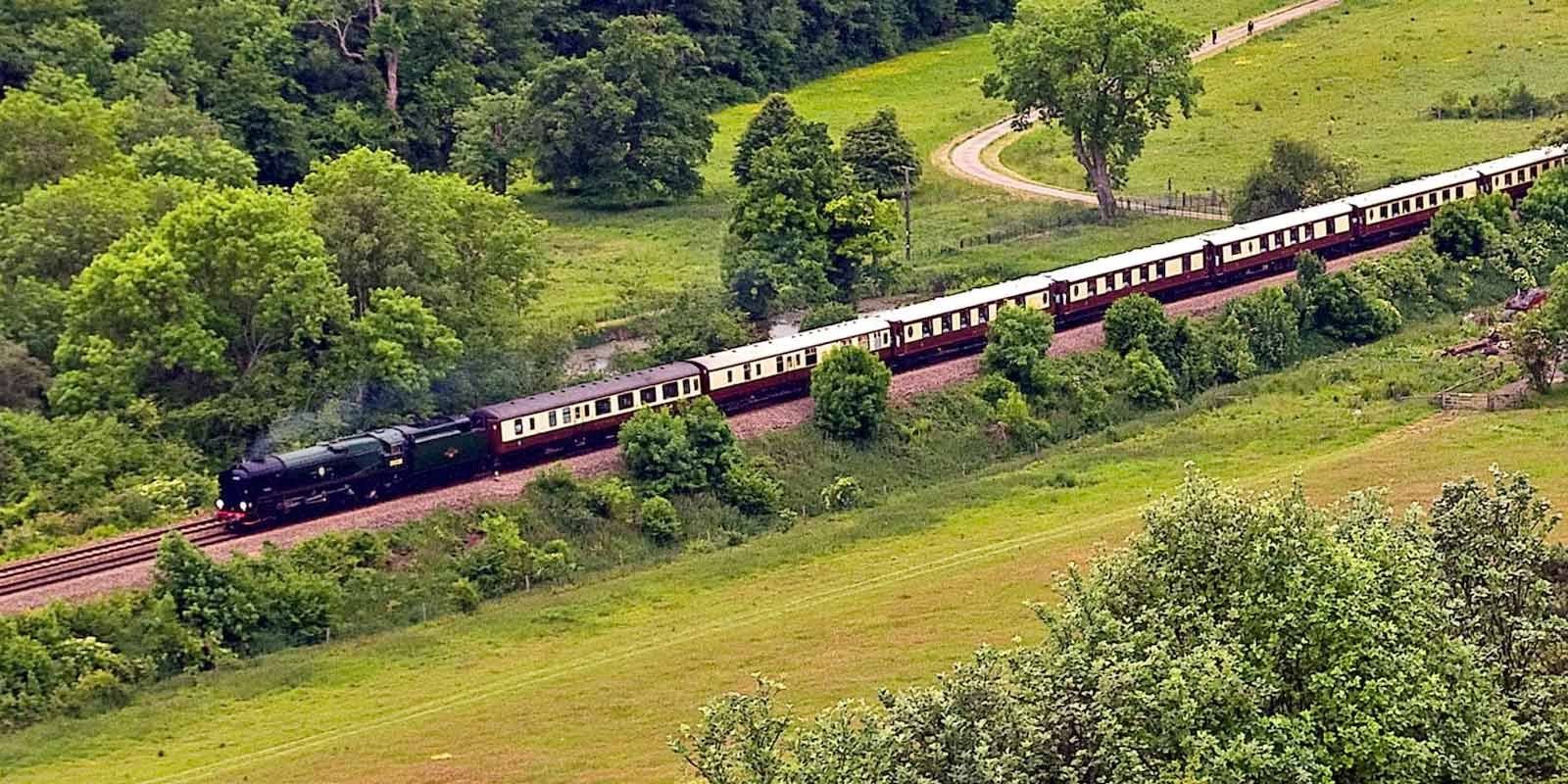
Overview: UK-based Great Rail Journeys launched the “Go Slow” campaign to promote the idea of slow travel, encouraging travelers to take their time and immerse themselves in the landscapes and cultures of their destinations. The campaign showcased the extensive portfolio of leisurely rail journeys offered by the company, emphasizing the journey itself as a key part of the travel experience.
Impact:
- Cultural Appreciation: The campaign tapped into a growing desire among travelers for more meaningful and immersive travel experiences. By slowing down, travelers reported a deeper appreciation for the places they visited, engaging more fully with local cultures, traditions, and people.
- Market Differentiation: Great Rail Journeys successfully differentiated its offerings in a crowded travel market by focusing on the unique aspects of rail travel that appeal to those seeking an alternative to fast-paced, checklist tourism. This approach attracted a niche market segment looking for a more relaxed travel style.
Results:
- Growth in Bookings: The campaign led to a noticeable increase in bookings for Great Rail Journeys’ tours, with particular interest in routes that offered unique cultural and scenic experiences. This growth underscores the appeal of slow travel and the effectiveness of the campaign in reaching its target audience.
- Expansion of Offerings: Encouraged by the positive response, Great Rail Journeys expanded its range of tours to include more destinations and unique rail experiences, further cementing its position as a leader in rail-based slow travel.
Travel Companies Leading the Way
1. Rocky Mountaineer:

Operating in Canada, Rocky Mountaineer offers luxury daylight train journeys that present the majestic landscapes of the Canadian Rockies from the comfort of glass-dome carriages. The company’s focus on sustainable tourism practices and local community support has set a benchmark for luxury rail tourism.
2. Belmond:

Belmond’s portfolio of luxury trains, including the Venice Simplon-Orient-Express and the Belmond Royal Scotsman, combines the romance of rail travel with luxury. These trains traverse through Europe’s most scenic routes, offering curated experiences that highlight regional cultures and cuisines.
3. Great Southern Rail (Australia):
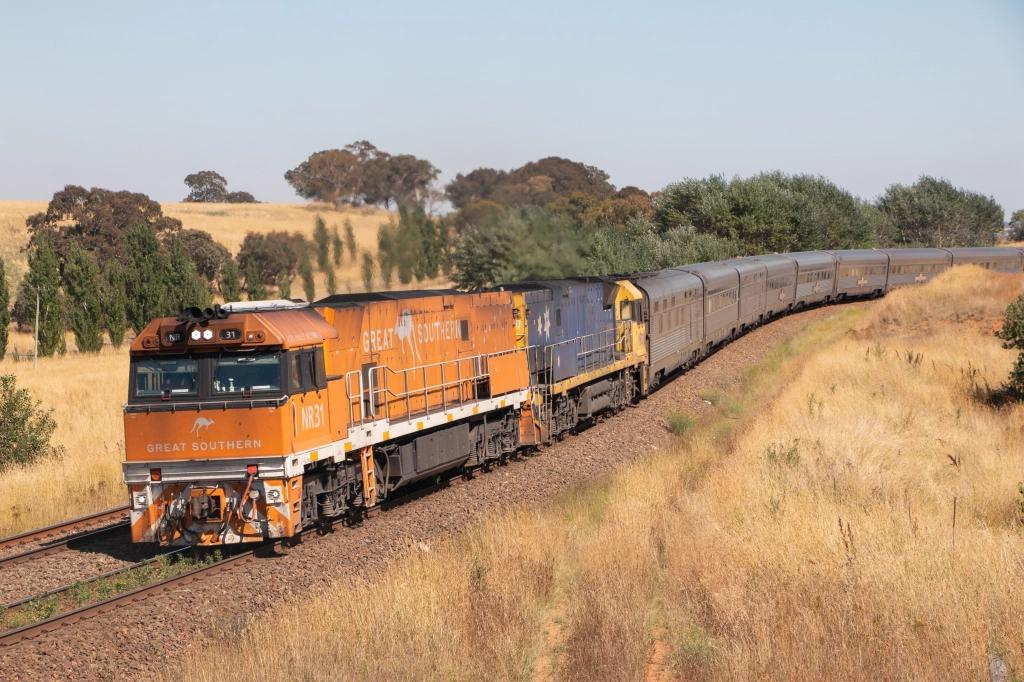
Offering iconic train journeys like The Ghan and Indian Pacific, Great Southern Rail showcases Australia’s vast landscapes and remote interiors. By promoting rail tourism, they provide a sustainable alternative to explore the continent’s diverse ecosystems and indigenous cultures.
4. Amtrak Vacations:
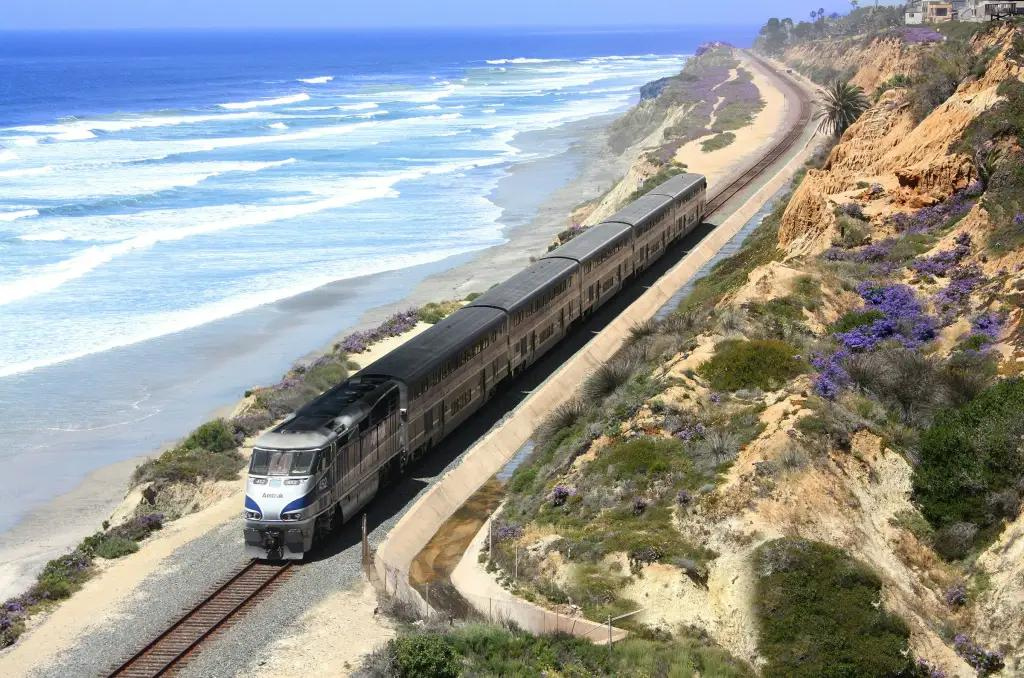
Offering appealing pre-planned vacation packages combining rail, accommodation, and activities, removing planning friction for a key North American market. The bundled packages likely attract travelers who might not have considered rail travel independently.
Conclusion

Rail tourism offers a compelling avenue for fostering balanced and sustainable tourism destinations, with its blend of environmental, economic, and social benefits, offering a viable solution to the challenges of over-tourism and environmental degradation.
By leveraging the unique advantages of rail travel, destinations and companies worldwide are not only enhancing tourist experiences but also promoting economic, social, and environmental sustainability. As the world moves towards a more responsible and conscious form of tourism, rail travel is poised to play a pivotal role in shaping the future of global tourism.
Various global initiatives promoting “slow travel” emphasize the environmental benefits and the enriched travel experiences offered by train travel. These campaigns target environmentally conscious consumers, highlighting rail travel as a way to reduce carbon emissions while enjoying a more relaxed and immersive travel experience.
However, realizing its full potential requires addressing the inherent challenges and drawbacks, particularly those related to infrastructure development, competition, and operational efficiency. Strategic investments, innovative solutions, and collaborative efforts between governments, industry stakeholders, and local communities are essential to overcoming these challenges and ensuring that rail tourism contributes positively to the global tourism landscape.
With over 30 years of global travel and tourism expertise, Dr. Jens Thraenhart is the Founding Partner of 25-year-old bespoke strategy consulting firm Chameleon Strategies, the 2nd Vice Chair of the World Tourism Organization’s UNWTO Affiliate Members, the former Chief Executive Officer of the Barbados Tourism Marketing, Inc. (Visit Barbados), the former Executive Director of the Mekong Tourism Coordinating Office, the founder of private-sector-led tourism marketing organization Destination Mekong, and former Board Member of the Caribbean Tourism Organization (CTO).
Previously active in China, in 2009, he co-founded acclaimed marketing agency Dragon Trail and published the China Travel Trends books and website. Jens has also held leadership positions with Destination Canada and Fairmont Hotels & Resorts (now Accor).
As founder of the Destination Film Forum, he is also a big proponent of the power of storytelling, having been recognized as one of the top 10 Most Influential Leaders in Travel in 2022 by Travel Vertical, ranking first in the category of Creativity and Brand Storytelling, and served on the Jury of the Cannes Lion International Film Awards.
Other recognitions for his work include being one of the travel industry’s top 100 rising stars by Travel Agent Magazine in 2003, one of HSMAI’s 25 Most Extraordinary Sales and Marketing Minds in Hospitality and Travel in 2004 and 2005, one of the Top 20 Extraordinary Minds in European Travel and Hospitality in 2014, and honored as one of the Global Travel Heroes in 2021.
He completed his Doctor in Tourism Management at The Hong Kong Polytechnic University and graduated from Cornell University with a Masters in Hospitality Management.
He publishes his three tourism industry blogs: (1) Tourism-Campaigns.com; (2) BalancedTourism.com; (3) PurposePicks.com.






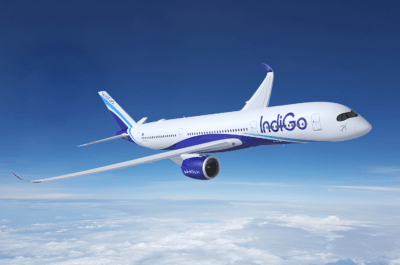








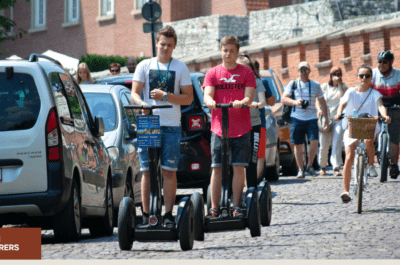












![[PR] PR_Ascott and Vimut Hospital_2024](https://www.traveldailynews.asia/wp-content/uploads/2024/04/PR-PR_Ascott-and-Vimut-Hospital_2024-400x265.jpg)

